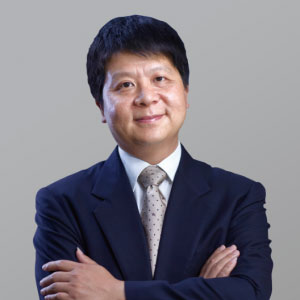  The Akhal-Teke are thoroughbred horses native to Turkmenistan in Central Asia. Known for their intelligence, endurance, and speed, they were brought to China’s Central Plains during the Han Dynasty to breed. Unfortunately, China lacked the pedigree systems needed to support their development, and the horses perished.
Creating an environment where innovation flourishes is a bit like breeding thoroughbred horses. It requires a combination of the right management systems and the right approach to developing new technologies.
Over the last 26 years, Huawei has created an environment that stimulates innovation by harnessing and aligning these forces. The following guidelines may be helpful when designing a sustainable innovation culture.
Invest for the long haul. Creating an environment where innovation can flourish starts with a long-term, strategic commitment. In particular, it requires an investment-led business model: companies should expect to re-invest a substantial fraction of their revenue back into research and development. (Last year, Huawei re-invested about 14% of its annual revenue in R&D, a 29% increase from 2013.)[i] A long-term orientation is especially crucial in industries such as ICT infrastructure, where a decade or more may be needed before returns on investment are realized.
Put customers at the center of your innovation ecosystem. Customer success is innovation’s purpose and its ultimate reward. Designing technical innovation operations to be customer-centric from the outset helps ensure that they deliver real value to customers. To that end, Huawei has set up 28 joint innovation centers around the world, ensuring that we innovate not just for our customers, but with them. Systems that put the customer at the heart of the innovation process help ensure that the development of successful new products and services relies less on chance, and more on collaboration and planning.
Spread the wealth. Sharing the rewards of innovation among customers, suppliers, and employees inspires passion – both within a business and across an industry. Companies generally accomplish little by aiming to create a small handful of billionaires. Instead, building a distributed team of business partners creates loyalty, a basic requirement for long-term success in an industry where talent is both mobile and in demand.
Partner with the best. It is not necessary (or practical) for innovators to do everything themselves. Instead, they should be prepared to innovate jointly with the world's best partners. For example, Huaweicollaborates with companies like SAP, co-developing solutions for the company’s in-memory computing platform. We also work with consulting firms such as Accenture to address the needs of the enterprise ICT market, helping enterprises realize big improvements in billing, customer care, and other business support functions. Such combinations create synergies, which in turn deliver valuable solutions to customers.
Don’t neglect the base of the innovation pyramid. Most R&D focuses on creating and improving products and services for customers. Equally important, however, is basic scientific research into areas such as mathematics, algorithms, and material science. Over the past 20 years, Huawei’s investment in scientific innovation has resulted in 40,000 patents. This basic technology research, and the patent portfolio it creates, forms the foundation of future development.
Innovate to create value. The ultimate goal of innovation is to create value, and the task can be approached in several ways. Huawei allocates a large proportion of its resources to what is sometimes calledsustaining innovation: rather than creating entirely new markets, sustaining innovation creates better value for existing ones. At the same time, we also allow a small team to explore disruptive innovation, openly and in a limited fashion, as a way of complementing our sustaining innovation efforts. The key is to take an even-handed approach, neither gambling on disruptive technologies nor shying away from them. Huawei respects scientists who research basic technologies; it also welcomes the creative engineers who focus on product innovation. Both are equally important.
In 2007, Akhal-Teke horses were re-introduced to China, in the hope that they could survive and thrive. This time around, the pedigree breeding system was introduced first, increasing the odds of long-term success.
This article has also been published in ‘ENTERPRISE INNOVATION’, a publication pertaining to IT and business related information. |